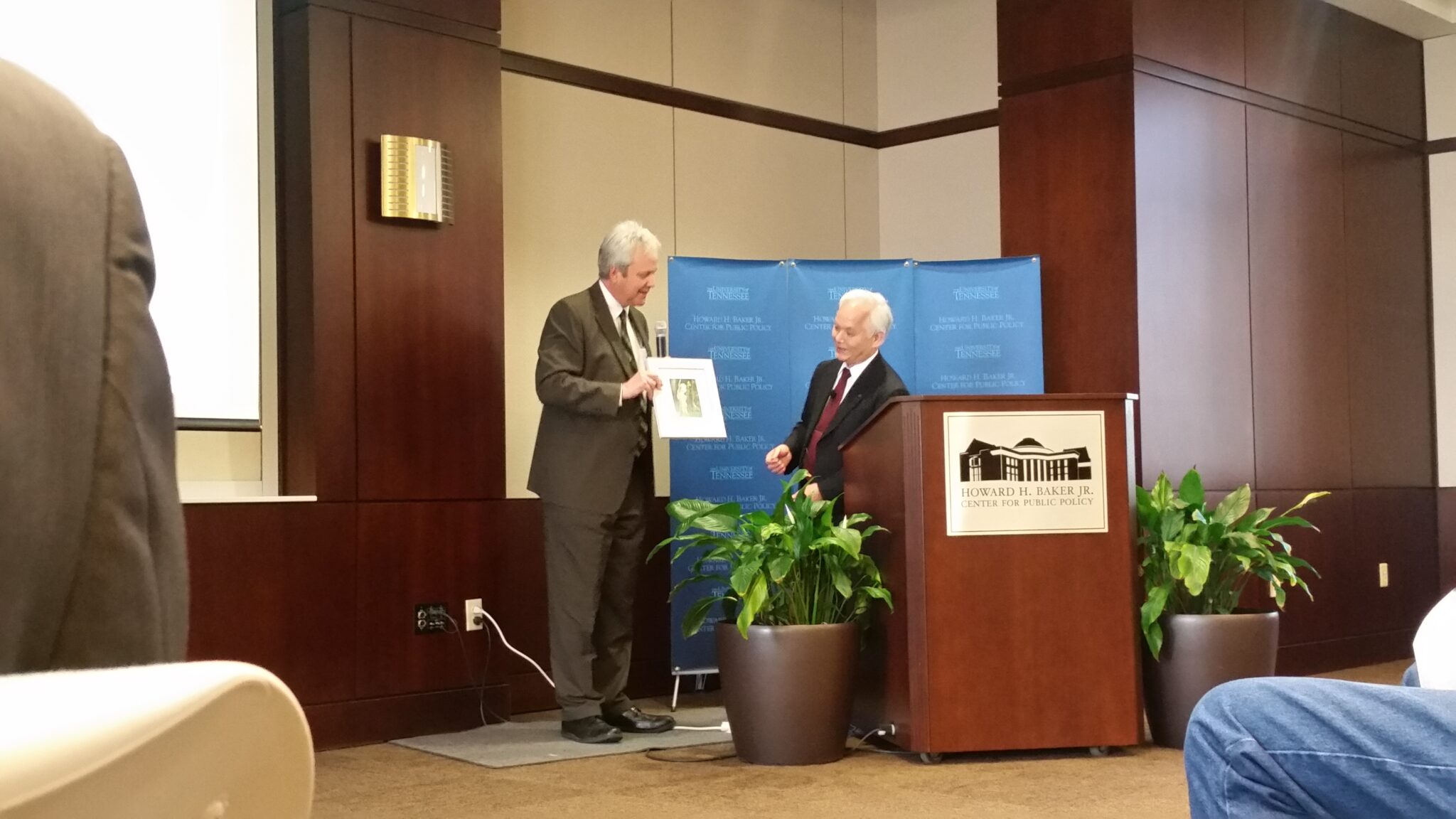Dr. Michinari Hamaguchi discusses research in science and technology, emphasizes more interconnected communities
Dr.Michinari Hamaguchi, of Japan Science and Technology Agency spoke in the Toyota Auditorium on March 23 to discuss a multitude of topics regarding new advancements in technology as well as sciences.

Former president of Nagoya University and President of Japan Science and Technology Agency (JST) Dr, Michinari Hamaguchi, spoke in the Toyota Auditorium in the Howard Baker Center on Thursday, March 23.
JST’s mission is to help create and fund innovative research in the general areas of science and technology. Since 2008, JST has assisted with 115 projects across 46 countries.
Some of these research opportunities are done on a grand scale, including the assistance in Malaysia’s infrastructure allowing for a low-carbon society. Other research opportunities are not what most would expect, such as “Synesensor” which is cloning and repainting old historic art pieces. Another project, “Mobility Society,” is designed to help assist the growing population of elderly people out of their home in Japan.
One notable case of JST’s projects is the ‘Revitalization Promotion Program.’
The Revitalization Promotion Program was an effort commenced after the 2011 earthquake and tsunami on the east coast of Japan. This program matched the locals who were affected with Academy-Industry Coordinators and Universities. This connection allowed for the needs of the locals to be met by members of JST and local enterprises leading to an easy rehabilitation of the areas affected by the natural disaster.
Connection was a persistent theme in Hamaguchi’s lecture. His goal for the agency is for a more interconnected community of researchers. Hamaguchi said he would like to “bridge the gap” between countries through connecting younger generations.
“I want more researchers to transfer from different countries,” Hamaguchi said.
Closing these gaps should lead to more innovation and overall productivity within research and development in the fields of science and technology for not only Japan, but for the U.S as well.
“Right now the United States and Japan probably has one of the strongest relationships as it is politically, and militarily,” Alex Colton, a student studying Political Science, said. “But scientifically, this could also expand our knowledge.”
In regards to bridging the gap in research communities, JST’s ambition in finding researchers to connect and work with could also benefit aspiring researchers from UTK.
Edited by Kaitlin Flippo
Featured Image by Adrian Godboldt

